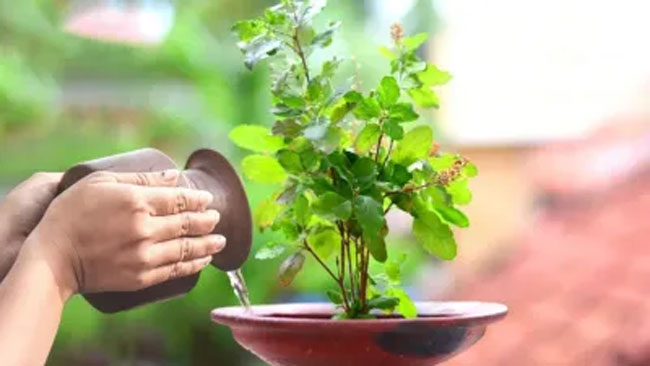 In Hinduism, the Tulsi plant holds immense significance. It is believed that having a Tulsi plant at home brings peace, prosperity, and happiness. Tulsi generates positive energy and helps eliminate various problems. According to Vastu Shastra, certain rules must be followed after planting Tulsi at home to maintain harmony and prevent negative energy from entering the house.
In Hinduism, the Tulsi plant holds immense significance. It is believed that having a Tulsi plant at home brings peace, prosperity, and happiness. Tulsi generates positive energy and helps eliminate various problems. According to Vastu Shastra, certain rules must be followed after planting Tulsi at home to maintain harmony and prevent negative energy from entering the house.
Why is the Tulsi Plant Important?
Tulsi is considered auspicious and a symbol of good fortune, which is why it is also known as “Shri Tulsi.” It is believed that if a Tulsi plant is placed at the main entrance of the house, Goddess Lakshmi is pleased, and the household never faces a shortage of wealth and prosperity.
Best Direction to Place a Tulsi Plant
As per Vastu Shastra, the north direction is ideal for planting Tulsi. The north is considered the domain of Lord Kuber, the god of wealth, and placing Tulsi in this direction attracts the blessings of Goddess Lakshmi.
Important Rules for Maintaining a Tulsi Plant
When planting and taking care of a Tulsi plant, it is essential to follow some key rules—
✅ Do not touch the Tulsi plant after sunset.
✅ Avoid plucking Tulsi leaves on Sundays.
✅ Refrain from plucking Tulsi leaves on the Dwadasi (twelfth lunar day).
✅ Never pluck Tulsi leaves using your nails.
✅ Lighting a ghee lamp near Tulsi in the evening brings positive energy.
✅ Pouring a little raw milk on the Tulsi plant on Thursdays is considered auspicious.
✅ Never chew Tulsi leaves directly with your teeth.
The Tulsi plant is not only religiously significant but also has immense health and Vastu benefits. When placed in the right direction and cared for following proper rules, it ensures peace, prosperity, and success in life.




